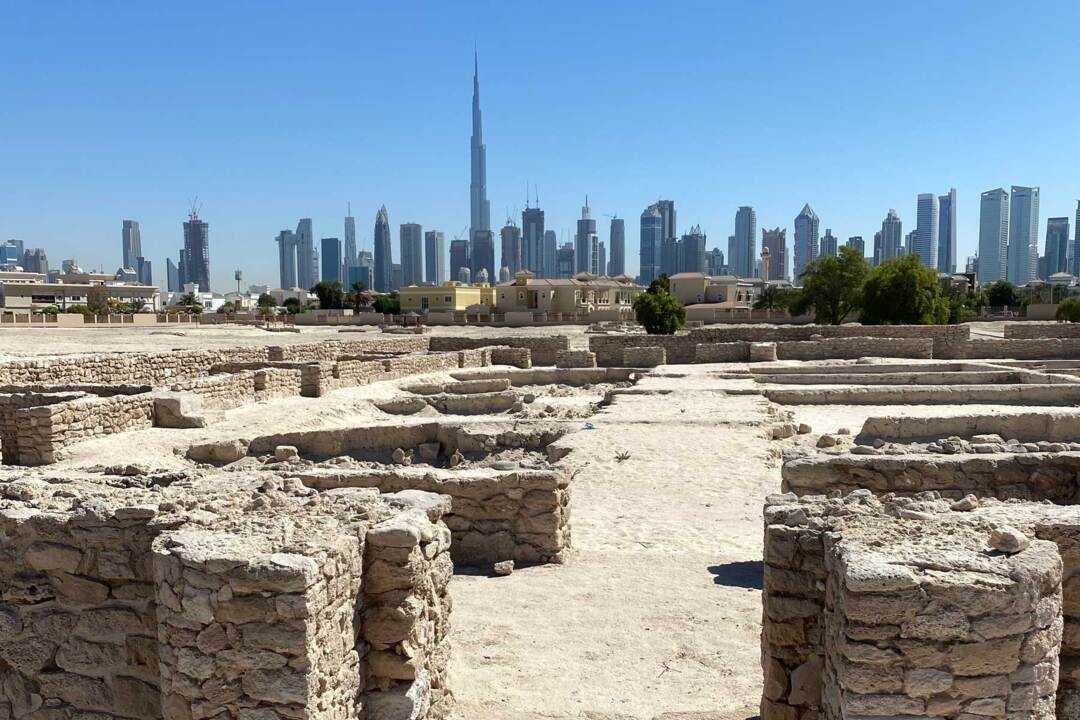Archaeological Sites in the UAE
Overview
The United Arab Emirates is renowned for its upscale lifestyle, modern infrastructure, and cutting-edge services. But despite all the flash, there is little indication of the extensive history that goes back thousands of years. Archaeological excavations in recent years have uncovered artifacts and sites that illustrate what life was like before the nation became as developed as it is today. However, much of it has been submerged over time. The important archaeological sites in the United Arab Emirates are listed below.
- Hili archaeological park
- Jebel hafeet tombs
- Baynunah fossil site
- Jumeirah archaeological site
- Hatta heritage village
- Wadi al helo
- Khor fakkan
- Al thuqaibah
- Aieh al herf
- Necropolis
Hili archaeological park
The Hili Archeological Park is one of just a handful UNESCO World Heritage Sites in the United Arab Emirates, and it has a Bronze Age past. A number of dwellings, tombs, and water channels from the Umm an-Nar era cover the majority of the site. The Hili Grand Tomb is a noteworthy building that features ancient engravings of humans and animals. Mohammed Bin Khalifa Street in Abu Dhabi is the location.
Jebel hafeet tombs
Given its beehive-like shape, the Jebel Hafeet Tombs are rather distinctive. Although the location is permanently closed, you can still see the buildings at the base of the Jebel Hafeet Mountain. The Jebel Hafeet Park is not far from the graves. Therefore, seeing this ancient monument can always be added to your itinerary.
Place: Abu Dhabi
Bida bint Saud
One of the numerous significant archaeological sites in the UAE is Bida Bint Saud. The site, which is in the shape of a sizable stratified rock structure, is located 15 kilometers from Garden City. A number of stone graves, some of which are 5,000 years old and originate from both the Bronze and Iron Ages, have been found during excavations at the location. Among the other noteworthy discoveries is a 3,000-year-old falaj irrigation system. Access to the location is limited as part of preservation initiatives. To view uncovered artifacts, visitors can always go to the Al Ain National Museum.
Place: Abu Dhabi
Baynunah fossil site
The Baynunah Fossil Site is well known for the remnants of a prehistoric wild camel hunt that took place 6,000 years ago. These fossils depict a period before domestication of the fabled ships of the desert. The website sheds light on the hunting habits of the Neolithic inhabitants of western Abu Dhabi's Al Dhafra Region.
Place: Abu Dhabi
Jumeirah archeological site
An ancient Islamic Abbasid site can be found in Dubai, United Arab Emirates, in the Jumeirah Archaeological Site. The site has residential buildings, a mosque, and a caravanserai among its archaeological discoveries. One of Dubai's more well-known archaeological sites is located here. The ninth and eleventh centuries of the Abbasid era are transported to the ninth and eleventh centuries through a visit to the Jumeirah Archaeological site. The site was unearthed in the 1960s, and the Dubai Museum now houses a conserved version of it. Be prepared to witness artifacts from the past, including pottery, coins, and tools.
Location: Dubai's Jumeirah
Hatta heritage village
Visit the ruins of the Hatta Heritage Village is one of the many things you can do in Hatta. The ancient region, which is home to centuries-old citadels, towers, forts, and the ruins of a mediaeval settlement, is a destination that history buffs will undoubtedly enjoy. It's one of the first communities in Dubai and was restored in 2001. The "Bait Al Wali" or home of the local monarch is one among the historical landmarks. You can also examine items like furniture, weapons, and other items that illustrate the culture of the time. Hatta, Dubai is the location.
Wadi Al helo
The Wadi al Helo archaeological site is a well-known in the United Arab Emirates and is home to a historical site and an uncovered Islamic a Bronze Age site can be found in the nature reserve, which is tucked away in the Hajar Mountains. The location must have been utilized for the manufacture of metal, according to archaeologists, who have found old smelting furnaces, indications of ores, and workshop remnants. The region, also known as "Sweet Valley," has been designated a protected area because it is rich in natural plants and animals. Amazing views of the ruins can be seen by climbing to the top of the valley.
Place: Sharjah
Khor fakkan
You might be familiar with Khor fakkan Beach is an archeological site. But did you realize that the location is significant historically? In Khor Fakkan along the sea, excavations by the Department of Antiquities in Sharjah uncovered a sizable old village on the slopes of three mountains.
Place: Sharjah
Al thuqaibah
Al Thuqaibah is an archaeological site in the UAE, was unearthed in the middle of the 1990s and is located in Sharjah not far from the town of Al Madam. Bronze blades, needles, and awls, among other artifacts, have been analyzed and show that economic activity began early. Low-walled structures with spacious interiors can be found throughout the historic settlement.
Place: Sharjah, close to Al Madam
Seih al herf
The Sieh Al Herf site, found in 2012, has ancient tombs, burials, and artifacts, making it deserving of a spot on our list of archaeological sites in the UAE. Around 50 mass graves from 2,000 B.C. were discovered during excavations, along with 10,000 artifacts. Al Salhiya Road in Ras al Khaimah is the location.
The necropolis of shimal
The Shimal Necropolis has remnants of circular tombs that resemble those at the Hili Archaeological Park, which are visible to visitors. The site of the former Sheeba Palace is located further down the road. The palace's only real remains are a few stone walls and wells. But the aerial view is still something to behold. Shimal, Ras al Khaimah, is the location.



















